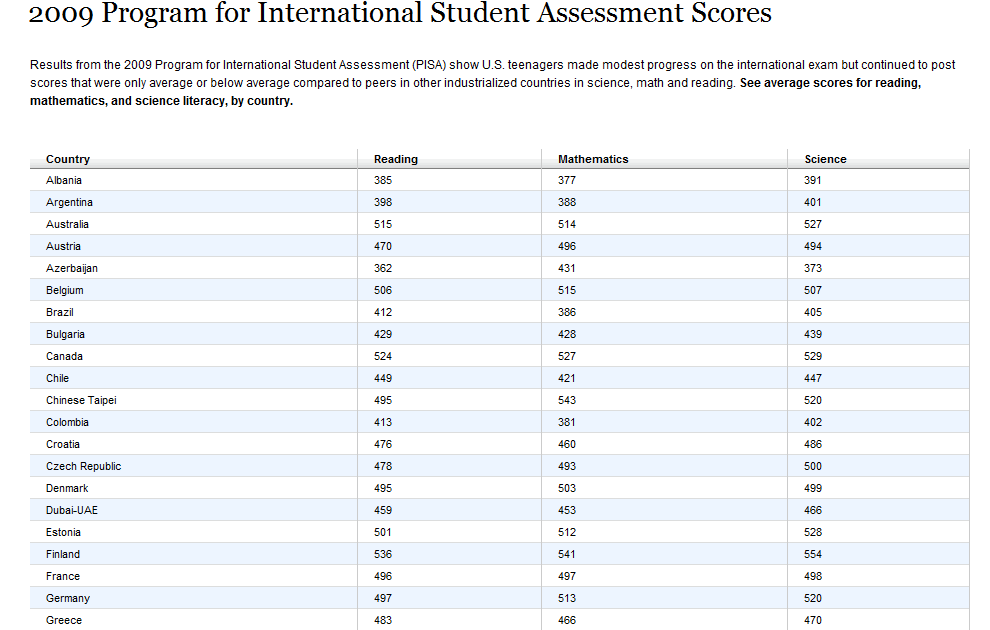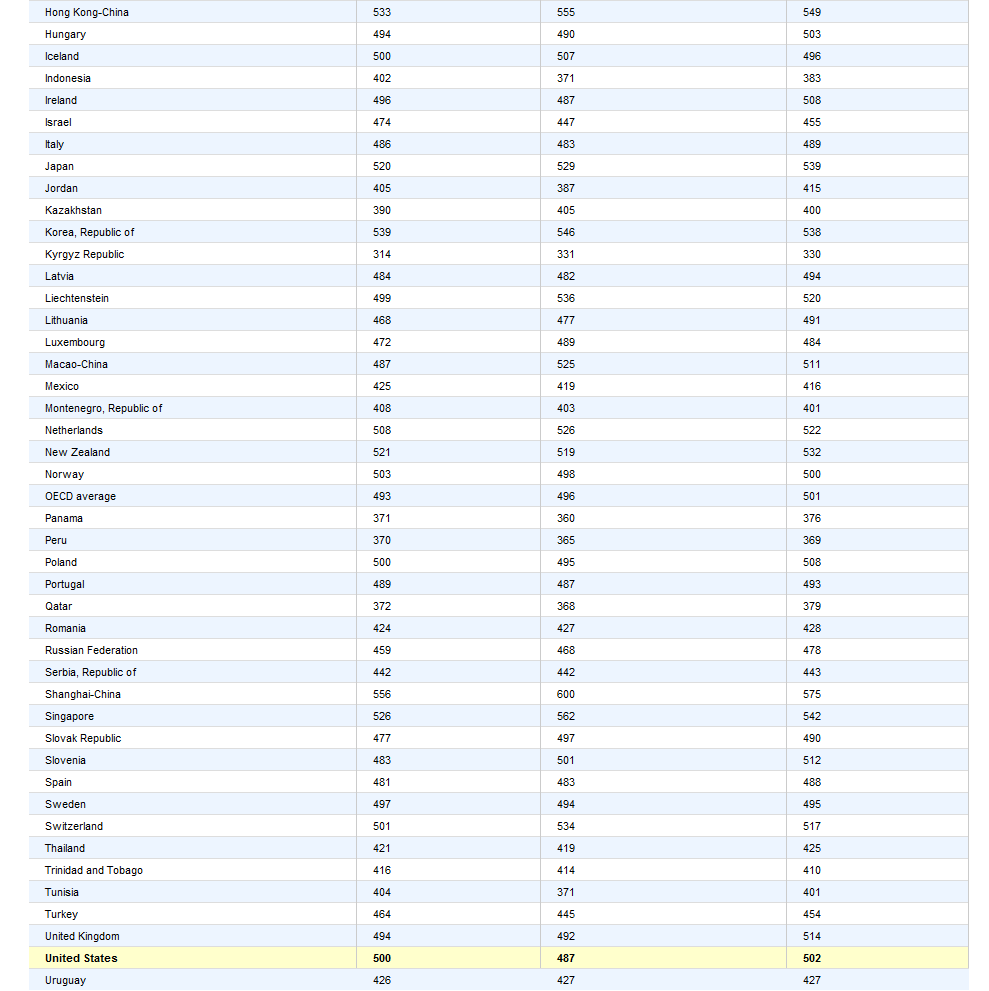|
|
|
|
|
|
|
News & Views item - December 2010 |
![]() Data
From the 2009 Edition of the Programme for International Student Assessment
(PISA). (December 8, 2010)
Data
From the 2009 Edition of the Programme for International Student Assessment
(PISA). (December 8, 2010)
The Programme for International Student Assessment (PISA) tests the abilities of 15-year-olds in 65 countries every three years; with the focus of the assessment on one of the three major domains of reading (2000/2009), mathematics (2003) and science (2006).
PISA 2009 involved 14,250 Australian students from 353 schools. Internationally, 470,000 students took part. Since PISA 2006, science literacy remained steady; however, Australia has shown a decline in reading and mathematical literacy since they were last tested.
According to the Programme for International Student Assessment (PISA) it:
focuses on young people’s ability to use their knowledge and skills to meet real-life challenges. This orientation reflects a change in the goals and objectives of curricula themselves, which are increasingly concerned with what students can do with what they learn at school and not merely with whether they have mastered specific curricular content. PISA’s unique features include its:
Policy orientation, which highlights differences in performance patterns and identifies features common to high performing students, schools and education systems by linking data on learning outcomes with data on student characteristics and other key factors that shape learning in and outside of school.
Innovative concept of “literacy”, which refers both to students’ capacity to apply knowledge and skills in key subject areas and to their ability to analyse, reason and communicate effectively as they pose, interpret and solve problems in a variety of situations.
Relevance to lifelong learning, which goes beyond assessing students’ competencies in school subjects by asking them to report on their motivation to learn, their beliefs about themselves and their learning strategies.
Regularity, which enables countries to monitor their progress in meeting key learning objectives.
Breadth of geographical coverage and collaborative nature, which, in PISA 2009, encompasses the 34 OECD member countries and 41 partner countries and economies.
The Minister for School Education, Peter Garrett, pointed out: "In both reading and scientific literacy, Australian students were outperformed by students in six countries or economies, while in mathematical literacy, Australians students were outperformed by students in twelve countries or economies, including two new entrants, Shanghai-China and Singapore."
The PISA 2009 report is available at: www.pisa.oecd.org.
The PISA 2009 Australian national report is available at: http://www.acer.edu.au/ozpisa.
_____________________________________________________
The table below, showing the overall scores, is taken from The Wall Street Journal.

